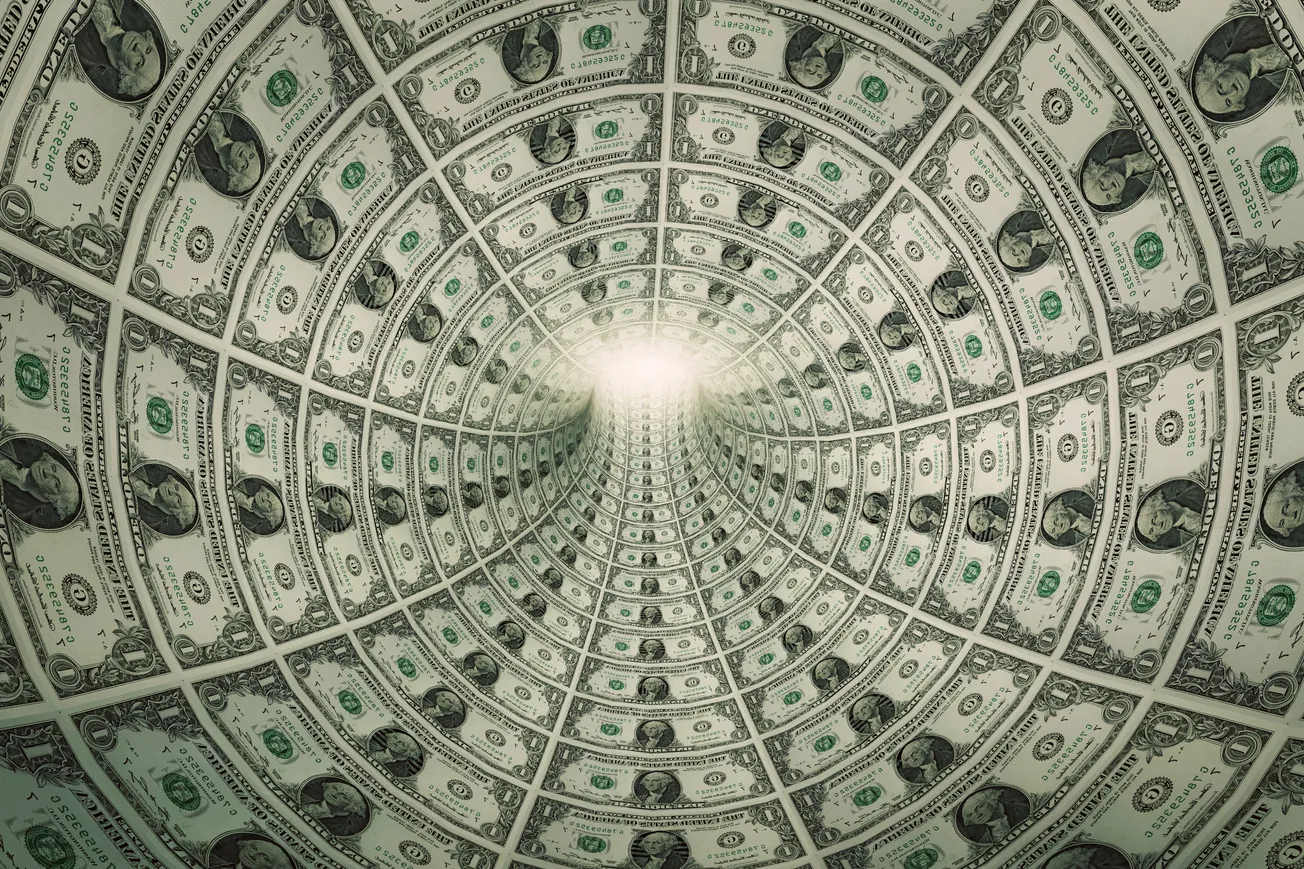By Ryan McMaken, The Mises Institute | October 19, 2023
There are many factors that affect the yield on government bonds. Yet, it is surely no coincidence that we continue to see yields climb as the federal government churns out new government debt at a breakneck speed never before seen during peacetime.
The benchmark 10-year Treasury yield—i.e., the interest taxpayers must pay on new government debt—reached an average of 4.38 percent in September. That's the highest since October of 2007, and if the yield continues to climb, we'll soon see it topping a 20-year high.

Part of the reason the yield continues to head upward is that it's becoming increasingly difficult to find enough buyers for the trillions of dollars of new Treasurys being added to the market every year since 2019. If the supply of new debt outpaces the supply of new interested buyers at a given price, then new buyers must be enticed with higher yields.
After all, government debt is like anything else in that—all else being equal—prices fall as supply increases. For example, if an enormous new natural gas well begins pumping out large amounts of gas, the price of natural gas will fall. If farmers experience a bumper crop of oranges, the price of oranges will fall.
So, when the marketplace is flooded with new government bonds, the price of bonds will fall—and that means the yield will rise.
How much of this new government debt is flooding the marketplace? Well, since 2019, the federal government has added ten trillion dollars of new debt, with total debt rising from about $23 trillion during the fourth quarter of 2019, to $33 trillion today. That's an increase of 43 percent.
Moreover, the pace at which the US is cranking out new debt is not falling—it's accelerating. In fact, the 2023 fiscal year looks to be the most debt-addled year since 2021 in the midst of the Covid Panic. To get a sense of this, let's look at the first 11 months of each fiscal year (which runs from Oct 1- Sept 30). The most recent Treasury Dept data shows that for the 2023 FY, the federal deficit has now topped $1.5 trillion. That's up 61 percent from the 2022 fiscal year. Only in the Covid years—when the US was in the midst of an enormous government-imposed economic slowdown—has the deficit plunged to greater debts.

Moreover, some estimates now tell us that the year-end deficit for the 2023 fiscal year will actually top two trillion dollars.
This all means a whole lot of new government debt coming into the marketplace, and that means further upward pressure on yields. That will be followed by enormous new tax bills for taxpayers who must pay the interest.
As Axios reported this week, rising yields coupled with rising total debt means the federal government's interest obligations are rising faster than was thought possible just a few months ago:
The U.S. government's fiscal outlook has become markedly worse in the last couple of months — not because of anything happening on Capitol Hill, but because of shifts in global bond markets.
Why it matters: An upward shift in long-term interest rates is putting the government on track to spend much more on interest payments in the coming years than was anticipated just a few months ago.
- If current rates stay high and fiscal policy matches current forecasts, the cost of servicing those debts will surpass defense spending in 2025 and top Medicare spending in 2026.
- In the current fiscal year, interest spending is on track to surpass $800 billion, more than double 2021's $352 billion figure. In 2026, the government's net interest expense would reach 3.3% of GDP, the highest on record.
- Those numbers are from the Committee for a Responsible Federal Budget, on the assumption that rates remain 1 percentage point higher than in the Congressional Budget Office's forecasts, based on the CBO's rules of thumb.
By the numbers: In July, the CBO fiscal projections assumed that the 10-year U.S. treasury bond would yield 3.8%, which was about where the securities were trading at the time.
- Not anymore. Since then, the 10-year yield set new modern highs, surpassing 4.8% on Oct. 6 (it was 4.71% on Monday morning).
It appears the United States is entering a classic debt spiral. As debt costs mount, the federal government must divert larger amounts of federal spending to just keeping up with debt payments. That, however, means fewer dollars available for popular programs like Medicare, defense spending, and Social Security. To keep these payments flowing, the federal government will need to issue even more debt. Or, the central bank can attempt to lessen interest obligations be forcing down interest rates—i.e., yields—by buying up more government debt. Yet, to do this, the Fed would need to create new money, driving further price inflation.
Thus, the choice now is between upward spiraling debt payments, or higher price inflation, or painful austerity. It's a safe bet the feds will try the first two options first.
Ryan McMaken is executive editor at the Mises Institute.
Original article link









